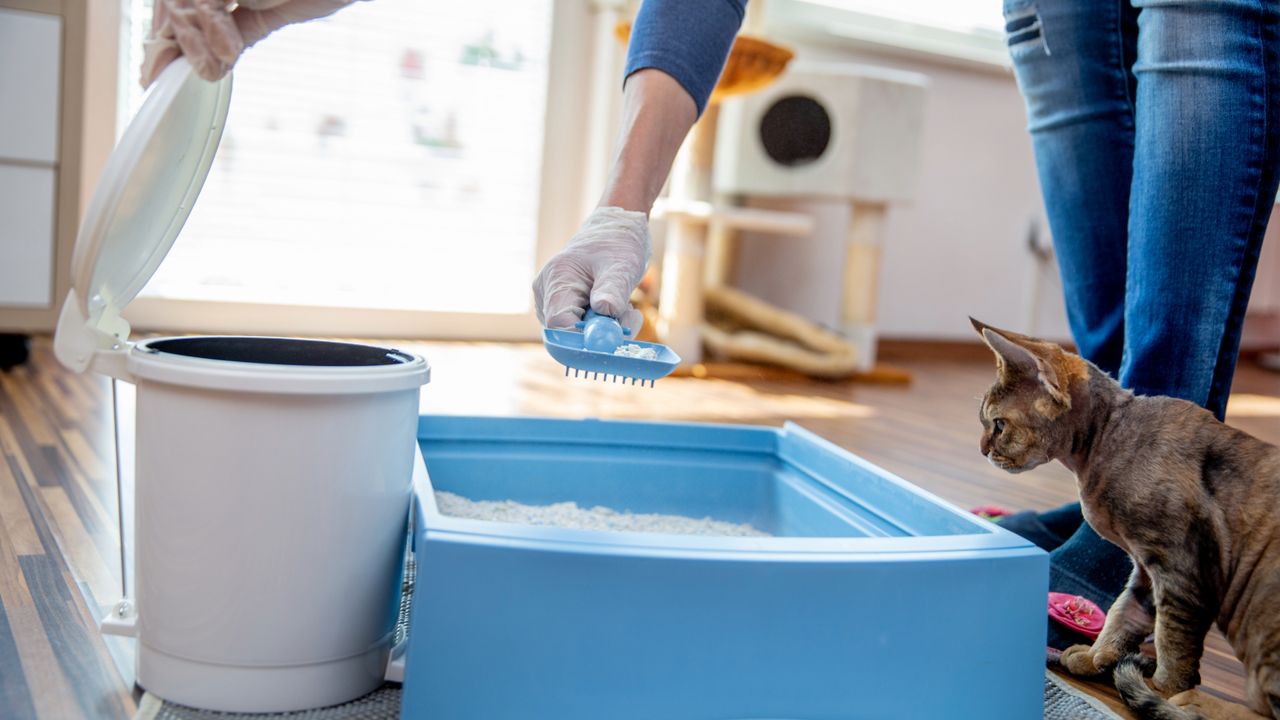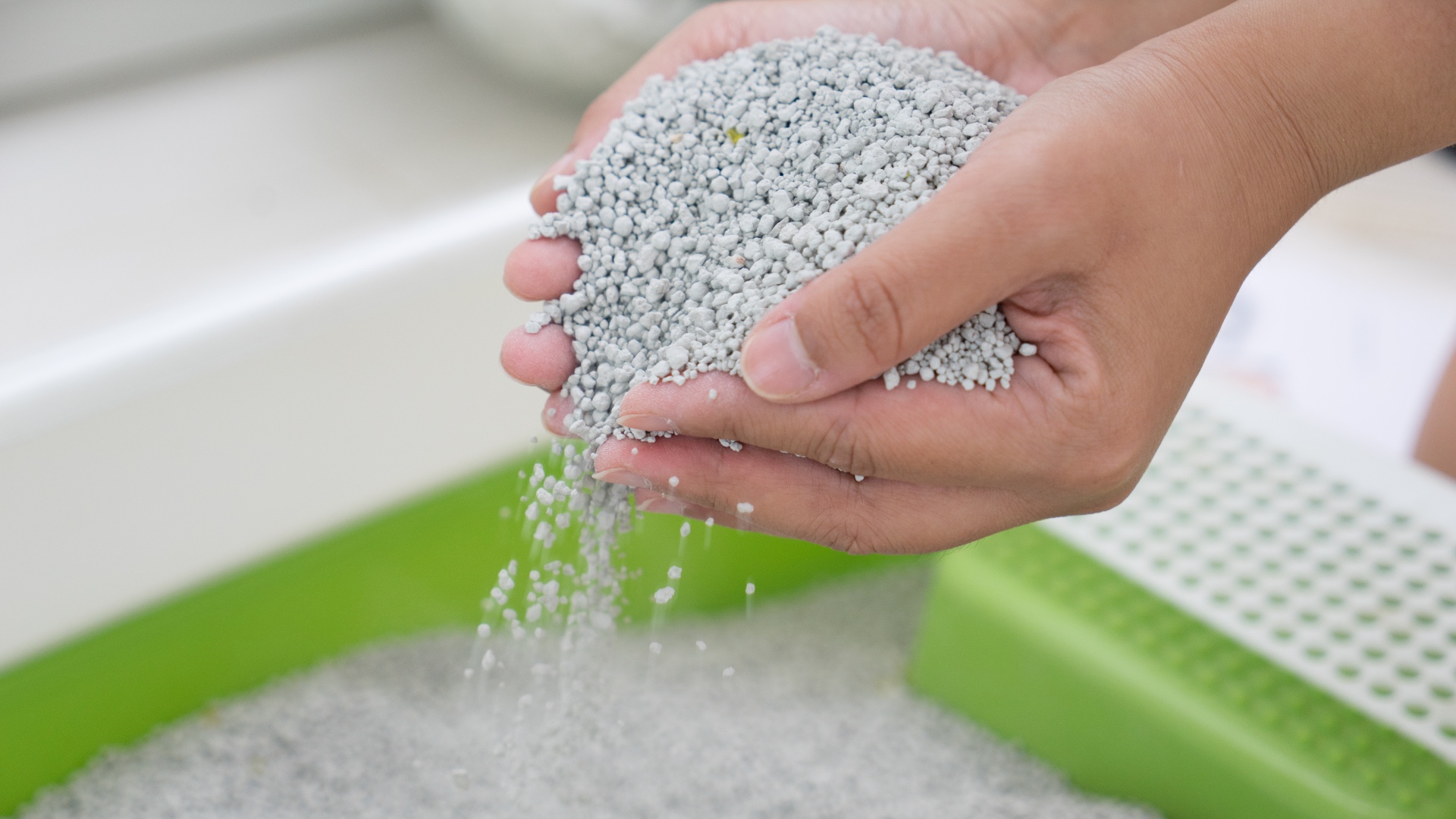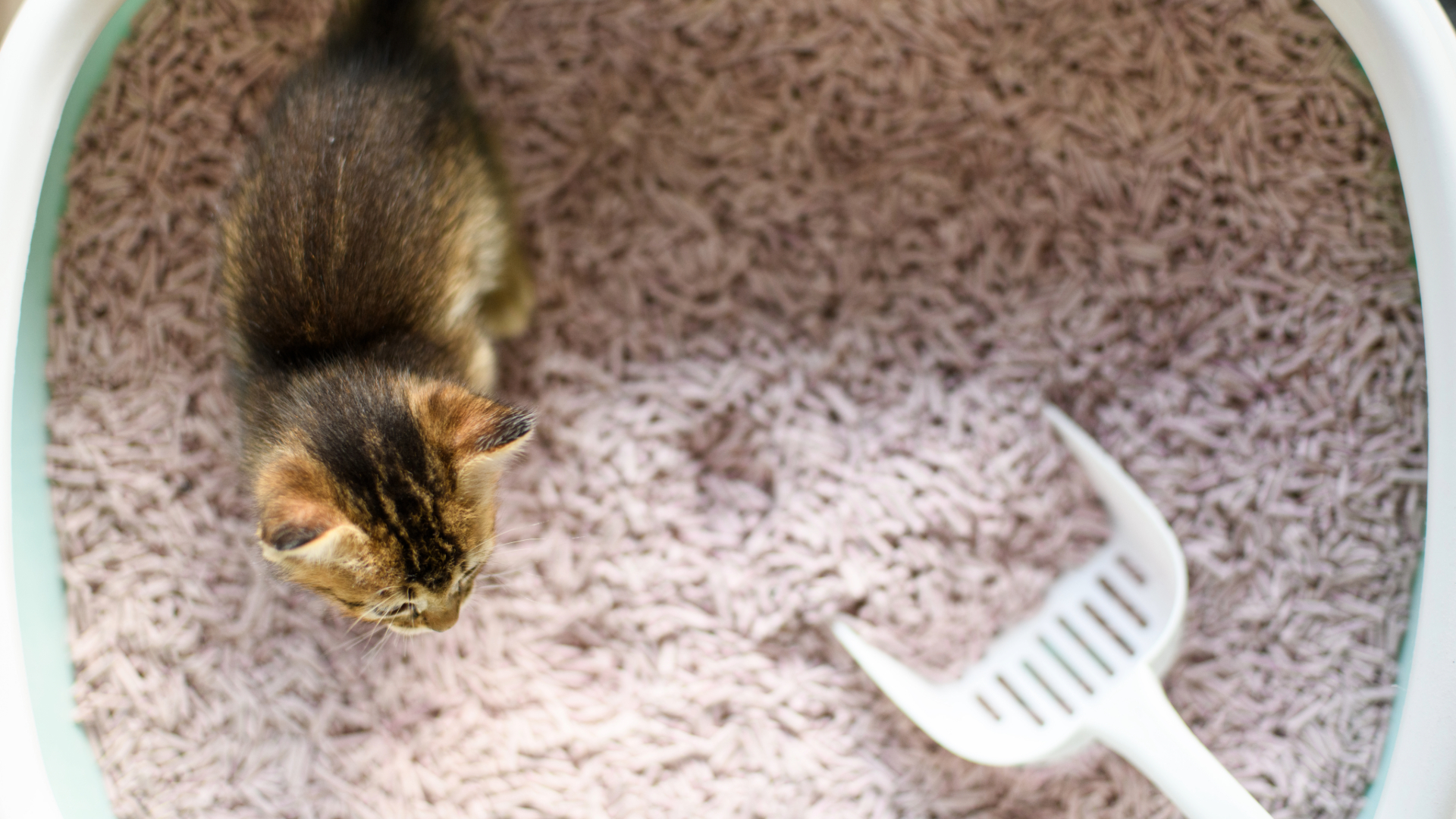
If you're wondering how often to change cat litter, you're not alone. It's a common question among pet parents – and there's a lot of conflicting advice online!
In short, you should thoroughly clean the best cat litter box once a week, with spot cleaning done daily. However, this is general advice and depends on the type of litter you’re using, how many cats you have, and their habits.
Below, expert vet Dr Rebecca MacMillan answers everything you need to know about how often to change your cat's litter – including whether cleaning it more frequently can improve their health, along with our top cat litter hacks to make life easier.
How often to change cat litter
Dr MacMillan explains that most litter boxes require a full change every week, but this can vary depending on the type of cat litter you use. Since clumping litter makes spot cleaning easier, you might find that a full change isn’t needed as often.
If you live with multiple cats, their litter box will probably need to be cleaned more regularly, around a few times a week.
So, what does a "full change" entail? The easiest method is to place a garbage bag over one side of the litter box and empty the entire contents into it. Scrape any leftover residue using a scoop, then wash the box with water and soap (but avoid using harsh chemicals or bleach). Once it's clean and the soap is rinsed away, dry the box with a clean towel and refill it with plenty of the best cat litter.

How often should a litter box be spot-cleaned?
Make sure you're spot cleaning your cat's litter box at least once a day, recommends Dr MacMillan. This involves removing all clumps of urine and feces to keep things fresh and clean.
She adds: "Cats are very clean animals and can be particular about their litter trays, so regular scooping is important."
Will I need to change the litter more often if I have multiple cats?
If your cats decide to use the same litter box, you'll need to deep clean it more frequently, potentially a few times per week if it's heavily soiled. However, if you have more than one cat, you should provide multiple litter trays.
Dr MacMillan says, "The rule of thumb is to have at least one litter tray per cat, plus an extra one."
Will my cats be healthier if I change the litter often?
Dirty litter can lead to medical problems – for both you and your cat. One of the biggest issues facing humans is inhaling too much ammonia from the feces and urine. But there is also a chance of developing a bacterial infection from the poop or coming down with toxoplasmosis, caused by a parasite found in the feces of infected cats.
Cats can get a fungal infection from a filthy litter box, but the main problem emerges in felines who decide to stay clear. If a cat starts to avoid a dirty litter box, then they may begin to hold their urine for longer, and this can cause a urinary tract infection and problems with their kidneys and bladder. Untreated, a cat can become very ill and could even die.

Dr. MacMillan says: "If you are already cleaning your cat’s litter box regularly, with daily scooping, then more frequent cleaning won’t necessarily make them any healthier.
“But if your routine is lacking and you often forget to keep on top of things, then an improvement on this could have a positive impact on your cat’s wellbeing. Cats prefer to use clean litter boxes. A dirty box could cause them anxiety and may lead to issues like toileting accidents around your home.
“Some cats can even develop stress-induced cystitis if they are feeling stressed out by a dirty litter box. This can cause signs like excessive straining, passing small amounts of urine at a time, and passing blood-tinged urine. Affected cats often require treatment from the vet to ease their symptoms."
Is there a way of reducing the hassle of cleaning cat litter?
- Spot-clean frequently to save time on full cleans
- Invest in flushable, clumping litter to speed up clean-ups
- Consider a cat litter subscription to secure the best price
- Keep everything you need in one place
- Buy a litter tracking mat (like this one from Amazon) to avoid a mess on your floor
- Choose a high-sided litter box to prevent spills (like this one from Amazon)
How do I know when to replace my litter box?
Wondering when you need to replace your litter box? Here are the signs, according to Dr MacMillan:
- Extensive scratches
- Scuffs
- An odor that doesn’t go (even after deep cleaning)
- Cracks in the plastic
- Stains or marks you can’t get rid of
You might also be wondering, 'Can I use sand as cat litter?' and 'how do self-cleaning litter boxes work?'
Edited by Georgia Guerin and Alexis De Leaver.







